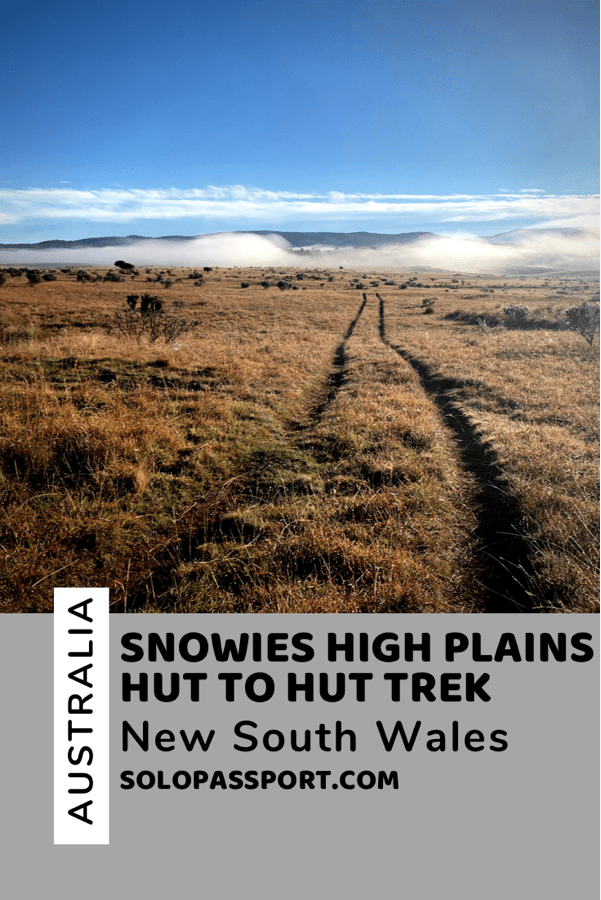Camping in Snowy Mountains: Snowies High Plains Hut to Hut Hike (2024)
Escape the ordinary and embrace the thrill of nature with the Snowies High Plains Hut to Hut Hike. Immerse yourself in the breathtaking beauty by camping in Snowy Mountains as you embark on a memorable adventure. Traverse the high plains, where the crisp mountain air invigorates your senses.
This unique hiking experience takes you from hut to hut, connecting you with the pristine wilderness and discovering the serenity of the Snowy Mountains. Set against a backdrop of mountain peaks, the trail unveils a mesmerizing tapestry of landscapes.
Along the way, each hut provides a cozy haven, offering shelter and a warm respite as you traverse the high-altitude terrains. As you camp under the starlit sky, the Snowies reveal their magical allure, creating an unforgettable experience for every adventurer.
Discover the joy of camping in the Snowy Mountains, where each snow-covered path tells a story, and every hut becomes a refuge in the heart of this winter wonderland. Your Snowies adventure awaits – a high-altitude odyssey that transcends the ordinary camping experience.
Historical huts in the Snowy Mountains region dot the landscape, creating an enticing backdrop for trekking enthusiasts. While I’ve conquered the Mount Kosciuszko Summit walk several times, the allure of multi-day hikes has always eluded me. This changed over the Easter long weekend when I embarked on a four-day hike meticulously organized by David and Yen from Aussie Explorers. The journey involved trekking between huts and camping at each stop.
What made this hike exceptional were the mesmerizing sunsets and sunrises that painted the sky with unparalleled beauty over the four days. The spectacle was breathtaking, with each dawn and dusk revealing a dramatic and picturesque canvas.
Page Contents
PIN for later reference – Camping in Snowy Mountains: Snowies High Plains Hut to Hut Hike
This article may contain affiliate links, meaning if you decide to purchase via my links, I may earn a commission at no additional cost to you. For complete information, please see our affiliate disclaimer here.
About The Snowy Mountains Region
The Snowy Mountains, often called the Snowies, grace the New South Wales (NSW) state of Australia. Nestled in the Australian Alps, this region boasts numerous peaks exceeding 2100 meters, with Mount Kosciuszko reigning as the tallest among them.

Come winter, the Snowies transform into a highly sought-after skiing destination, attracting enthusiasts eager to experience the thrill of the slopes.
Huts and Camping in Snowy Mountains
Abundant within the national park are historical huts constructed during the early days of settlement, each bearing cultural significance and enjoying protection from the government. Crafted by stockmen, fishermen, miners, and other pioneers, these huts represent a tangible link to the past. For comprehensive information on these huts and their historical importance, one can refer to Kosciuszko National Park Huts.
During our hike, a ranger shared that the region boasts nearly 69 huts, each holding historical significance, adding an enriching layer to the natural landscape.
Camping near these hikes is an option, but it’s crucial to be aware that the huts in the vicinity lack substantial facilities, and seeking shelter within them is strictly prohibited.
How to Get to the Starting Point of Snowies High Plains Hut to Hut Hike?
The most efficient route from Sydney to the Snowy Mountains is by driving. Covering a distance of approximately 492 kilometres, the journey takes approximately 5 hours and 30 minutes. Two routes are available—one through Canberra and the other along the coastal route, with the Canberra option being the shorter. By carpooling with two companions, the collective expense, including fuel and tolls, amounted to just AUD 56 per person, offering a cost-effective and enjoyable travel option.
Essential Things to Remember Before Going on Snowies High Plains Hut to Hut Hike
- Mobile coverage is nonexistent within the national park.
- The hut toilets are generally non-functional, except at Old Snowy Campground and Blue Waterhole, where biodegradable toilets are available.
- It’s advisable to bring water purifying tablets, as the water from streams and bodies may be consumed.
- Given the dry terrain, ensure you have sunscreen and a cap to combat the intense daytime heat.
- It’s important to note that sleeping inside the huts is only permitted in emergencies.
Download the Emergency Plus app for any unforeseen situations. The app does not require a mobile network; it shows your location. This is useful to inform the emergency services in case of any emergency.
If you are a tourist, always have good comprehensive travel insurance to cover yourself in case of any emergency.
Snowies High Plains Hut to Hut Hiking Itinerary
Begin your trek by acquiring a 4-day national park pass, available for purchase at the Jindabyne visitor centre. Ensure the visitor centre is your initial stop before commencing the hike.
Day 1 – Sydney to Old Snowy Campground
Day 1 predominantly involved a drive from Sydney to the Old Snowy campground. Despite Google suggesting a shorter route, the journey, lasting approximately 6 hours, can extend to 8 or 9 hours due to challenging, unsealed roads covering about 90 kilometres leading to the campground.
Optimal access to the campground involves a route from Sydney to Cooma and then from Cooma to the campground, minimising exposure to unsealed roads.
Campsite – Old Snowy Campground
The Old Snowy campground was an idyllic camping haven adorned with charming horses and captivating sunrises. The chilly night bestowed a layer of frost, enhancing the already stunning landscapes.
However, it’s important to note that the campsite lacks any mobile network coverage. Additionally, the site is equipped with two biodegradable toilets, ensuring a more environmentally friendly camping experience.
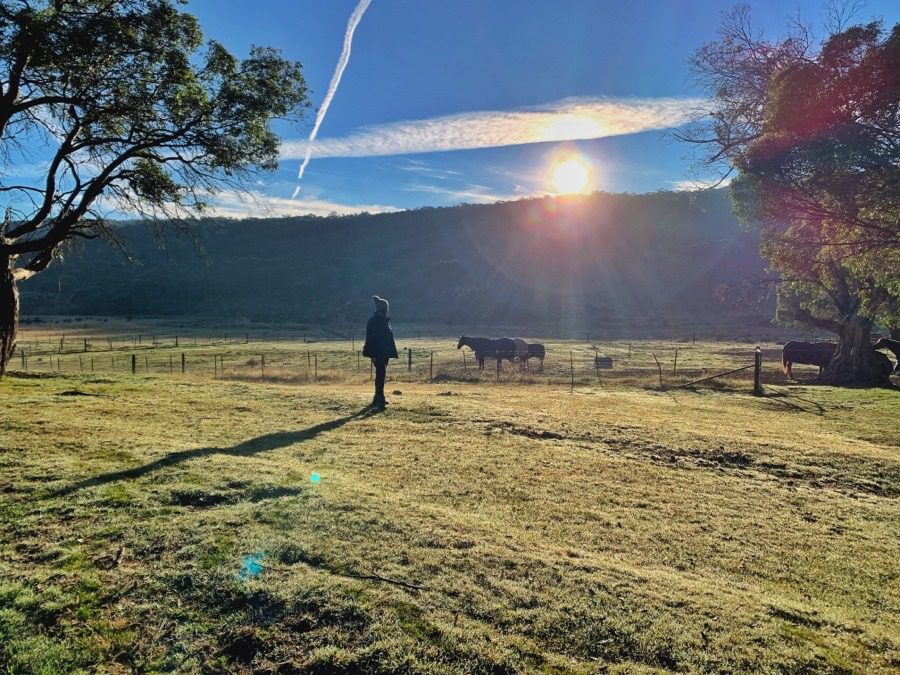
Day 2 – Old Snowy Campground to Pockets Hut
On Day 2, our trek officially commenced as we drove from the Old Snowy campground to the end of Pockets Saddle Road. While the parking at the end of the road is free, it’s essential to note that there is no shade available. Prepare to leave your car exposed to the sun for the entire 4-day duration, as there are no shaded areas in the parking vicinity.
The hike initiates from the car park, leading to Pockets Hut via a scenic fire trail. The journey offers picturesque surroundings, allowing hikers to encounter numerous wild horses along the way.

Statistics
- Path: Pockets Saddle Road to Pockets Hut.
- Distance: 5 kilometres. Other trekkers opted to prolong their journey by 20 kilometres, venturing towards Mt Bimberi. It’s been noted that the summit offers a breathtaking sunset experience, adding an extra layer of awe to the extended trek.
- Time taken: Just over an hour.
- Grade: Easy.
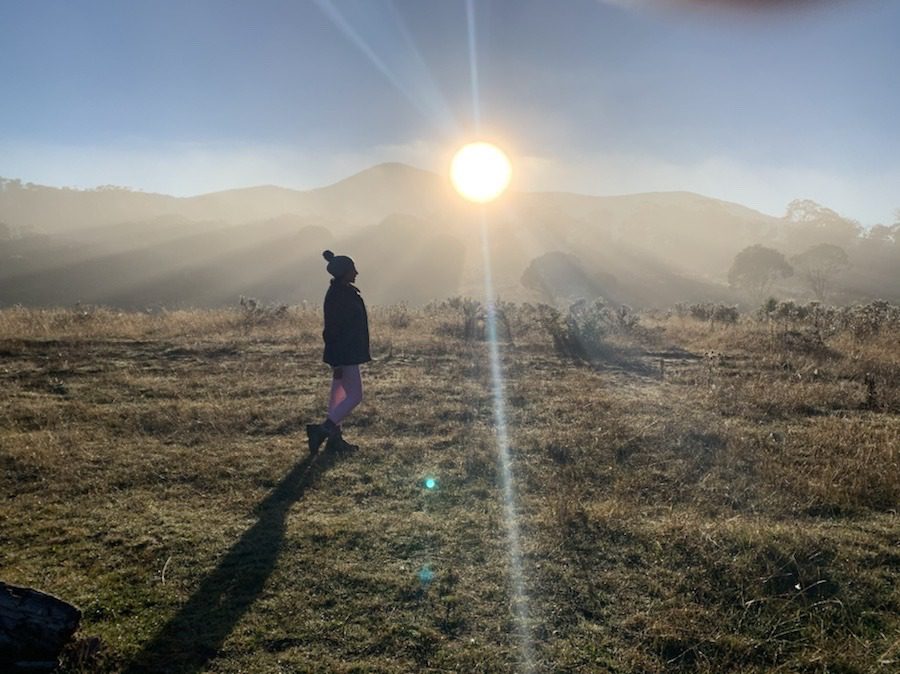
Campsite – Pockets Hut
Erected in the 1920s, Pockets Hut is a charming structure crafted by the affluent Australian company, Australian Estates of Cooma. Personally, I found Pockets Hut to be exceptionally appealing—an exquisite abode adorned with ample shade and a relaxing platform.
It’s important to note that the hut lacks toilet facilities. While a water stream is available nearby, it’s essential to treat the water before consumption.



Day 3 – Pockets Hut to Bill Jones Hut via Blue Waterhole
Day 3 unfolded as an extensive journey encompassing two distinct campsites. Our trek began from Pockets Hut, guiding us through the scenic route to Bill Jones Hut via Blue Waterhole.
Blue Waterhole Campground
The Blue Waterhole Campground serves as a car camping ground, renowned for its popularity, particularly during weekends and holidays, attracting a considerable crowd. Positioned in close proximity to the Blue Waterhole, the campsite offers an opportunity for swimming, enjoyed by some trekkers. Personally, I refrained from swimming due to the chilly water temperatures.
Facilities at the campground include a drop toilet, catering to the basic needs of campers in this picturesque setting.

Statistics
- Path: Pockets hut to Bill Jones hut via Blue Waterhole.
- Distance: 15.2 kilometres.
- Time taken: 4 to 5 hours.
- Grade: Medium with few steep hills.
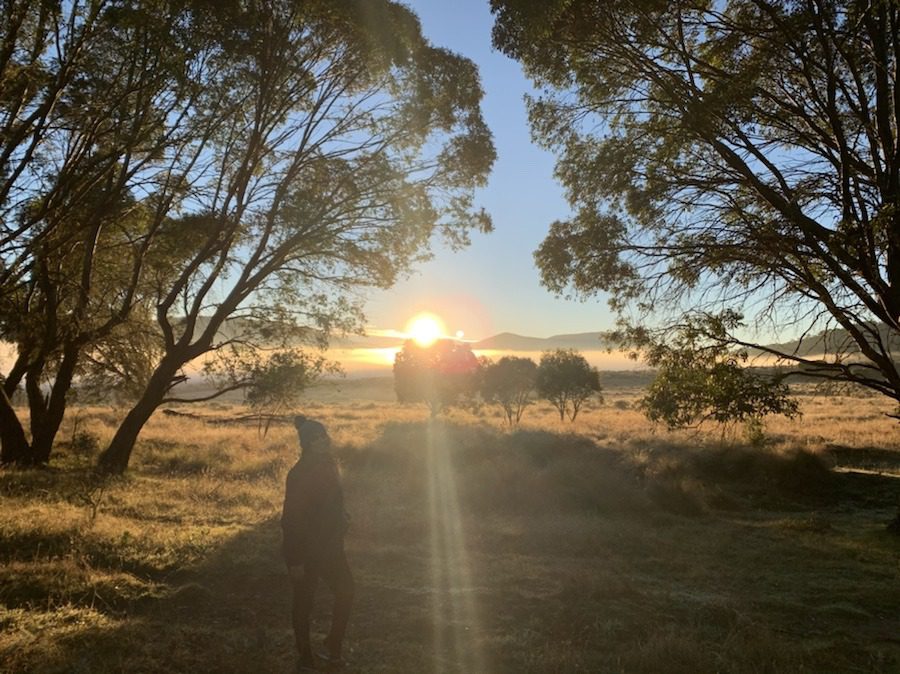
Campsite – Bill Jones Hut
Constructed in 1952, Bill Jones Hut is purportedly the final hut erected for grazing purposes in the vicinity, credited to William Travis Jones. Additional information about the hut can be explored on the Kosciuszko Huts website. I found Bill Jones Hut less captivating—a diminutive structure lacking seating space, although surrounded by trees.
The area is frequented by kangaroos, providing an opportunity for wildlife observation. However, it’s important to note the presence of numerous bugs and insects; therefore, keeping your tent securely closed is advisable.
While a small puddle of water is available, it necessitates treatment before consumption. Notably, there are no toilet facilities at Bill Jones Hut.
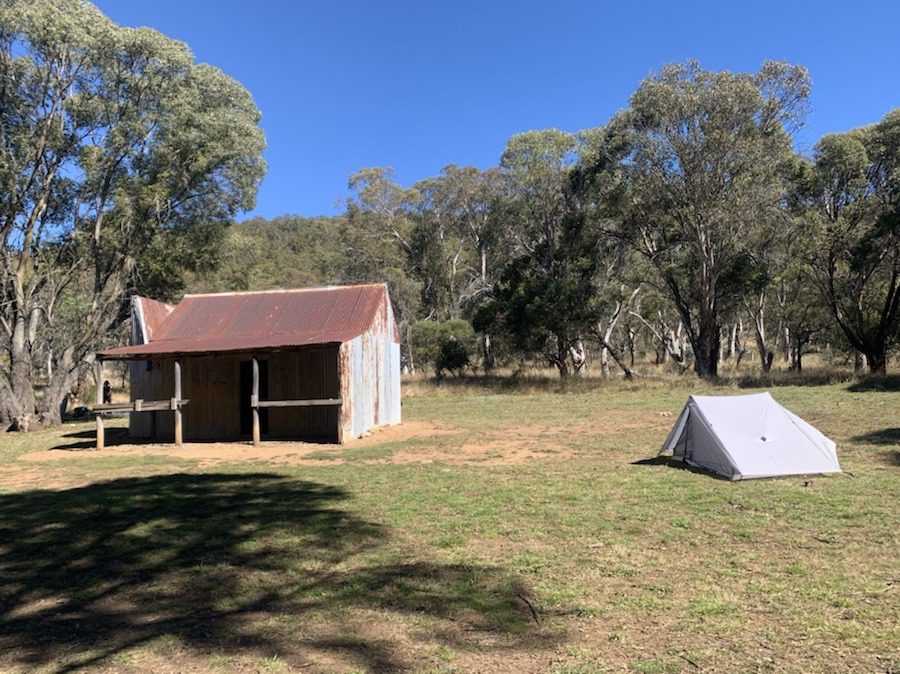
Day 4 – Bill Jones Hut to the Car Park
Day 4 marked the conclusion of our trek, at least for some of us. We trekked from Bill Jones Hut to the car park. However, a few fellow trekkers extended their adventure, continuing to the Old Currango Homestead for an additional day. Dating back to the 1870s, the Old Currango Homestead stands as the oldest hut in the national park.
After our trek to the car park, we embarked on the journey back to Sydney. This time, we first reached Cooma and then took the highway to Sydney.
Statistics
- Path: Bill Jones hut to the car park.
- Distance: 12.7 kilometres.
- Time taken: 3 hours.
- Grade: Easy to Medium.
Lessons Learned
Every trek or travel experience imparts valuable lessons; this journey was no exception.
- The foremost lesson I gleaned is the importance of maintaining a lightweight backpack. Carrying a hefty 16-kilo backpack during this trek was cumbersome, prompting a resolution to trim it down to around 10 kilos in the future.
- Prioritize food with ample proteins, whether in protein powder, lentils (daal), or high-quality dehydrated options. Investing in quality, albeit pricier, dehydrated food pays off in the long run.
- Always be prepared for cold weather by packing a reliable sleeping bag and mat. A dependable water bladder is essential, but ensuring it’s leak-free is equally critical. Inadequate hydration due to a leaking water bladder led to constant headaches during the trek.
- Electrolyte tablets are a must; sip on them consistently throughout the day to stay hydrated. Carrying an up-to-date first aid kit, complete with unexpired medications, is a non-negotiable aspect of trekking.
- Anticipate thigh rashes, a common woe for female trekkers. Wearing loose track pants instead of tight ones can mitigate this issue, preventing friction between the clothing and the skin.
Closing Notes
While the sunrises and sunsets on this hike in the Snowy Mountains were unforgettable, it doesn’t top my list of favourite multi-day hikes in Australia. There are numerous other trails that offer breathtaking views. Nonetheless, if you have a few days to spare, I recommend undertaking this hike for 2 to 3 days. It provides a unique opportunity to explore the rich history and wildlife of the region, making it a worthwhile experience.
How can you support me?
You know how much I love coffee, so you can buy me a coffee – Buy me Coffee!
Or you can purchase from one of the below travel resources without any extra charge to you:
Travel Resources
Book your flight on Skyscanner.com or Trip.com
Reserve your accommodation on Stay22
Reserve your stay at a hostel on HostelWorld
Use RentalCars or DiscoverCars for hiring self-driven cars
Book your tours and travels or purchase tickets on Viator or GetYourGuide
For a universal SIM card, use DrimSim
Buy comprehensive travel insurance on SafetyWing and WorldNomads
If you liked this article and if it was helpful in your planning or travelling, do share, tweet, or pin this post.
Follow me on Instagram | Facebook | YouTube | Twitter | LinkedIn
Do you have a question? Do you want any suggestions and tips for travel, hikes, and scuba dives? Use the Subscription box below to sign up and get updates by email.
PIN for later reference




